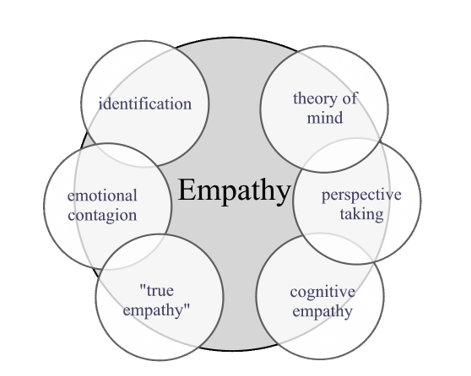
 Someone once said – You can’t buy happiness, but you can buy candy. The word Candy is one of the words that gives an instant rush.
Someone once said – You can’t buy happiness, but you can buy candy. The word Candy is one of the words that gives an instant rush.
Cupcake, Donut, Éclair, Gingerbread, Honeycomb, Ice Cream Sandwich, Jelly Bean, KitKat, Lollipop, Marshmallow, Oreo, Pie. Did someone say ‘Not candy or pastry but android versions’? Dear O Dear.
We are going through a period of transition and adaptation.The future of marketing lies in creating products, services, and company cultures that inspire, include, and reflect the values of target customers and may be time to revisit the omni-channel experience along with a competitive advantage. At times, only when we closely watch how the ‘marketing to creating need’ has evolved, it gives a sense of pride to be a part of this space. Couple of decades ago, there was no multi-channel or cross channel or omni channel. Today, DATA forms the fabric for organizations to thrive.
I am a Digital immigrant, seen the shift to the DIY world when technology was not that democratic.
When Mirabilis in early 90s developed the ICQ Chat rooms, it simply connoted ‘I Seek You’ and that my dear, was one such starting point. Those days having a desktop at home was like- a big thing!
How I love to talk about this! Feel lucky to have seen the consumer space and ‘the way we market’ evolve. There are these nostalgic moments from time to time. Nostalgia about the days of owning a landline phone and thinking how soon I get buy a cordless phone. Imagine, a cordless phone! Those days it was a rage and gave the feelings of being rich and a game changer.
The television was limited to few channels but with ‘solid’ content – Hum Log, Tamas, Buniyaad, Junoon, Wagle Ki Duniya, Fauji, He-Man and the Masters of the Universe, Street Hawk, Ramayana, Mahabharata and some more which was yes…rich in content, bringing families closer as families usually watched these together.
Then the Nokia (synonymous with 3310 and N70 range) and progression to Blackberry versions. That time, it was simple- if you don’t have a blackberry pin then you just don’t have it in you! Not to forget the famous portable media players, mp3, mp4 and iPod. When Masaru Ibuka ideated the launch of the Walkman, it was a game changer till a long time. Almost every portable media player was called Walkman. Like every ‘synthesizer’ was called as Casio.
Then the so-called smartphone reshaped the ‘need’. Yes, this was bulls-eye on making it a ‘need’ rather than a ‘want’. The bigger screen size in our palms worked the left-over magic. And then ofcourse, Mackintosh took the game to another level. And now we are talking about 5G, Drones, Voice and Artificial Intelligence (the irony here is this is created by the human natural intelligence). Digital became the Economy not so long back with WhatsApp and Jio starting a new Era in the Internet space. Oyo beat Taj in market cap without owing a single hotel! I mean, this is simply mind-blowing as to how each space is reimagining to be competitive while doing one thing absolutely right – identifying a problem and solving the problem. Like in six sigma we talk about DMAIC (Define|Measure|Analyze| Improve|Control). My then coach used to tell me and which I agree to completely that defining the problem statement is essential.
2005 gave rise to the terminology (I rather call these unnecessary jargons) Marketing 2.0- which was simply new generation of marketing ideas emerging from the Internet era. This reminds of the scene from Rajkumar Hirani’s 3 Idiots where the professor asks Aamir Khan – Kehna Kya Chaheto Ho? (LOL). Then ofcourse if there is 2.0, there has to be a 3.0 and 4.0. Marketing 3.0-treats customers not as mere consumers but as the complex, multi-dimensional human beings that they are. Customers, in turn, are choosing companies and products that satisfy deeper needs for participation, creativity, community, and idealism. Marketing 4.0 emphasized on the approach to combine online and offline interactions between businesses and customers.
What is this game that we are talking about? It is about three dimensions of creating the need-
Technology. Data. Experience.
Artificial Intelligence (AI) and machine learning are positioned to remain a key area of investment focus for many organizations in 2019. A recent research survey reports that 43% of organizations currently use or plan to build and buy AI and machine learning systems with a primarily goal of increasing operational efficiency and effectiveness for their Digital Asset Management (DAM)
It is about ‘not waiting’ for the consumer to ask but to create the need for a specific ask. And that ‘consumer ask’ is almost always – either – ‘This was the thing I was looking for’ or ‘How can you make the experience better and easier within optimal cost to purchase’
Marketing now, is not as used to be. Today we have more talent in various genres due to a plethora of skilled courses available online. The challenges that marketers are still struggling with – How to make best use of data and transparency in Attribution. Today it is intriguing as to how each consumer views the same screen in customized ways and the experience being made more seamless with technology doing a Live-In relationship – adtech-martech. I would say they are yet to get married but not long.
TRENDS THAT I SEE IN ACTION
a) The 4 C’s
We have heard of the prominent 4P’s in the Marketing framework. Now we see them being replaced by the 4C’s. That is a dramatic shift.
• The Product is replaced by Co-creation: instead of simply launching a product, the company works together with the community, capturing the demands of it
• The Price is superseded by Currency: Recurring revenue producing products/service systems – such as subscription channels (Spotify, Deezer, OTT platforms etc.) – are growing in the digital age, replacing the single price
• The Place is substituted by Communal Activation: Anyone can sell a product from anywhere. We no longer rely on physical spaces to sell ourselves.
• The Promotion is replaced by Conversation: Product promotion is superseded by conversations between community members and social networks.
b) Trust as the new Currency
The 2019 Edelman Trust Barometer “reveals that trust has changed profoundly in the past year — people have shifted their trust to the relationships within their control. The economy runs on money and businesses thrive on trust, which is the currency of life. Trust has a gravitational effect with people getting more motivated, creative & willingness to endure. When a business gains trust, every aspect of it becomes more profitable. The reason we don’t talk about it in general is probably because it is difficult to measure and takes time. It rests more on your sense of how you are being perceived even when the market is down. Your credit score is really a Trust Score. If a bank trusts you based your past financial responsibility, then you will get a higher score and pay less for a loan.
The GDPR is also helping marketers tighten up data hygiene to build more customer trust. A recent study from IBM reveals that nearly 60 percent of the organizations surveyed see GDPR as an opportunity to improve privacy, security, data management or as a catalyst for new business models, rather than simply a compliance issue. So, trust and authenticity it is.
c) Empathy as the new Value pillar
In the emotion economy, purpose creates loyalty. Marketing is shifting from attention economy to emotion economy which is based on the value of ‘Empathy’. The shift is visible towards purpose driven brands that are being authentic in terms of messaging and promise. The latest quintessential example is Nike’s partnership with NFL quarterback Colin Kaepernick, the star who knelt during the National Anthem in protest of police brutality. The action spurred thousands of people to film themselves burning Nike apparel. At the same time, by featuring Kaepernick in its ad campaign, Nike appealed to the social justice mindset of a new generation of consumers — and ultimately generated around $43 million.
d) Inhouse Agencies
The adoption of Agile marketing is accelerating the outcomes. A lot of companies are gradually shifting from Outsourcing to having inhouse expertise to churn down the turn-around time along with better and deeper internal collaboration, be it creative, video, offline production or any specific customer requirement.
e) Inclusive World
A few years ago, when you bought a quality product, your claim reached some family, friends, and acquaintances at the most. The information did not go through because the channels were limited and exclusive. These days, if you buy some bad product, you can complain about your social network and demonstrate your dissatisfaction with people you don’t even know by marking the company name. So, if someone else decides to research the product, they will have access to your complaint and can be influenced by it. The world today is inclusive, social and horizontal. Not to forget, Inclusiveness is also towards more diversity at workplace which is creating a shift in culture for good.
f) The need for deeper Minimum Viable Product
The catch to this development technique is that it assumes that early adopters can see the vision or promise of the final product and provide the valuable feedback needed to guide developers forward. Key characteristics of MVP are – enough value that people are willing to use it or buy it initially. It demonstrates enough future benefit to retain early adopters and it provides a feedback loop to guide future development. This suggests that technically orientated products used by technical users may be most appropriate for the product development technique.
g) Hyper- personalization
Consumers actively seek relevant information in the tone that they would want to consume. So, the need to juxtapose the approach of Digital Marketing with Technology enabled marketing in terms of contextual information is crucial. It is important to accentuate that effective use of personas not equal to personalization. Customer expects seamless experience at the first touch point, each consumer being unique. Hyper-personalization goes one step further and utilizes behavioural and real-time data to create highly contextual communication that is relevant to the user.
The Need for going Hyper!
Your message only has 7 to 8 seconds to capture and hold the attention of your user. To get noticed, your communication needs to stand out to be clutter-breaking.
According to Google, ‘best’ search phrases have increased by 80% in the past 2 years on mobile devices. People are researching online heavily to make more informed decisions.
User engagement with content has gone down by 60%, and information overload is making consumers tune out.
According to Accenture, 75% of consumers will be more likely to purchase from someone whose offerings are personalized according to individual preferences.
For example: Sending an email to a user with their first name in the subject line is a typical example of personalization. A good practice, however, not engaging enough to capture a user’s fancy.
Let’s take a glimpse of Hyper-personalization. For example, a user browses for brown shoes on your app, spends around 10 mins and leaves without purchasing. A scrutiny of this sojourn may lead to relevant data points from business perspective.
Starbucks is a good example. They have seriously upgraded their personalization game with the use of AI. Using real-time data, the system can send over 400,000 variants of hyper-personalized messages. Offers doled out are unique to each user’s preferences, based on their activity and past purchases.
h) Evolving role of CMO, CTO, CIO or need for All In ONE?
This one is a no-brainer and somehow it seems that the industry is still struggling with this. I would say this is more to do with how we evangelize our culture as an inside-out approach by gradually not working in silos and collaborating more often. Not saying that it is easy but very much attainable for the good of the shaping up the Digital & Technology Big Bang!
i) Unified Marketing Channels
A classic example is Trivago- a leading global hotel search platform. Trivago has unified its marketing channels, creating a global single source for cross-departmental insights. They used Datorama to build an automated system to integrate and harmonize their marketing and booking data, thereby creating a single source for each team to conduct performance analysis and optimization. With the combination of Datorama’s AI-powered TotalConnect, API Connector Library, and in-the-box dynamic marketing data model, they have successfully integrated all their marketing data sources into one centralized platform. So, yes, choosing the right ‘Marketing Intelligence’ partner and resources to empower your tech stack leading to shift in time from data preparation to advanced analytics.
j) Emerging Agile Marketing
While my stint at GENPACT, I learnt the concept of BCPDRP- Business Continuity Plan Disaster Recovery Plan. If you can adapt, you can survive. In its latest 2019 Marketing Trends Report, IBM lists agile marketing as one of the top emerging marketing trends. This helps with faster response to change, faster time to market, augment in productivity, better prioritization, data driven insights, rapid iterations over Big-Bang campaigns and Testing, data over opinions and conventions and numerous small experiments over a few large bets.
k) Internet for Women
The disproportionate access to men and women permeates across digital services, however, Internet usage in India is growing exponentially. A report by BCG projected that women will reach a 40% share in internet usage by 2020. A similar study by Google and consultancy AT Kearney said that only one out of every five e-commerce customers in India is a woman and the Industry will see a 5X+ growth in the number of women shoppers by the year 2020, as top barriers to non-adoption are overcome. Also, with increasing women in workforce and leadership roles, a big change is seen to being engineered in terms of breaking the glass ceiling.
Also, Brands are now seeming to dive into understanding the need to think differently about how they reach and resonate with women in a meaningful way. Digital may be the panacea for faster realization of empowerment, and it will be interesting to see how the shift in reimagining ROI happens and also how advertising is shaping up as more gender balanced content along with powerful and deeper narratives being conveyed in more innovative ways.
At the end I would just say, there is much technology, trying to do the same thing – making it simple for us via complex micro elements, however, to stay ahead in the race there will always be a need to reimagine purpose, study relevant data , think in terms of ‘next practices’ , keep connected at ground level with the consumer and listen more deeply to stay relevant. So, looking through the à la mode lens.
Written by Ankoor Dasguupta, Vice President- Brands, Marketing & Special Projects at SHEROES.
